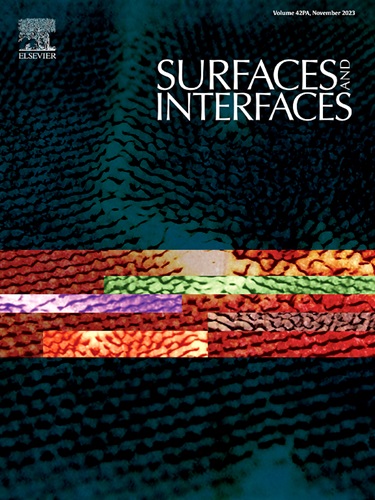软硬复合材料界面特性与机械性能的相关性:分子动力学视角
IF 5.7
2区 材料科学
Q2 CHEMISTRY, PHYSICAL
引用次数: 0
摘要
本文章由计算机程序翻译,如有差异,请以英文原文为准。

Correlation of the interfacial properties and mechanical performance of hard-soft composites: A molecular dynamics perspective
Hard-soft composites combine the high strength of the hard phase with the flexibility and processability of the soft phase, showcasing significant application potential. Current researches on the mechanical performance of these materials primarily focuses on macro- and mesostructural influences, leaving the micro-level effects of interface properties unclear. In this work, ceramics (Al2O3 and Si3N4) were selected as the hard phase, while polymers (epoxy resin (ER), polymethyl methacrylate (PMMA), and polyethylene (PE)) served as the soft phase, resulting in a series of composites with varying interface properties. Molecular dynamics simulations were employed to investigate the mechanisms by which interface properties affect mechanical performance. The results indicate that the presence of polymer coatings significantly enhances mechanical performance, particularly during compression. Among all combinations, the Al2O3-PMMA system exhibited the best performance, attributed to the strong electrostatic attraction between the two phases, which enables the ceramic phase to withstand greater stress during tensile or compressive loading. Additionally, when the ceramic phase undergoes bending, significant van der Waals repulsive forces develop, preventing further bending and improving damage tolerance. The results enhance the understanding of the micro-mechanisms through which interface properties affect mechanical performance, facilitating the design of promising hard-soft composite materials.
求助全文
通过发布文献求助,成功后即可免费获取论文全文。
去求助
来源期刊

Surfaces and Interfaces
Chemistry-General Chemistry
CiteScore
8.50
自引率
6.50%
发文量
753
审稿时长
35 days
期刊介绍:
The aim of the journal is to provide a respectful outlet for ''sound science'' papers in all research areas on surfaces and interfaces. We define sound science papers as papers that describe new and well-executed research, but that do not necessarily provide brand new insights or are merely a description of research results.
Surfaces and Interfaces publishes research papers in all fields of surface science which may not always find the right home on first submission to our Elsevier sister journals (Applied Surface, Surface and Coatings Technology, Thin Solid Films)
 求助内容:
求助内容: 应助结果提醒方式:
应助结果提醒方式:


